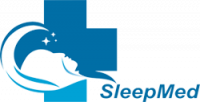What is Sleep Apnoea?
Sleep apnoea is a sleep disorder commonly associated with loud snoring, choking, and excessive daytime sleepiness. There are 3 main types of sleep apnoea:
- Obstructive Sleep Apnoea: this is the most common type of sleep apnoea, occurring when the muscles in the back of the throat relax. When the muscles relax, the airway narrows or closes during inhalation, lowering the level of oxygen in the blood. When the brain senses this, sufferers are roused from sleep to reopen the airway. This awakening is usually so brief that it isn’t consciously remembered, but it can lead to highly fragmented sleep.
- Central Sleep Apnoea: this occurs when the brain fails to transmit signals to the breathing muscles. Common symptoms include waking up with shortness of breath or headaches.
- Mixed sleep apnoea: Presents as a combination of obstructive and central sleep apnoea.
Risks of Untreated Sleep Apnoea:
Apart from causing tiredness during the day, sleep apnoea can have more serious effects on health. Some of these include, an increased risk of high blood pressure and potentially increased risk of developing heart failure, abnormal heart rhythms (atrial fibrillation), coronary artery disease, and strokes.
What to do if you suspect you have sleep apnoea
Some common symptoms of sleep apnoea include snoring, daytime sleepiness, morning headaches, irritability, and shortness of breath. If you suspect you may have sleep apnoea, talk to your GP about getting a referral to see a sleep physician, or organising a home-based sleep study.
EPSS Score
| 1. Epworth Sleepiness Scale (EPSS ≥ 8 to qualify) | |||||
| Situation | Chance of dozing/sleeping | ||||
| Never | Slight | Moderate | High | ||
| 1 | Sitting and reading. | 0 | 1 | 2 | 3 |
| 2 | Watching TV | 0 | 1 | 2 | 3 |
| 3 | Sitting, inactive in a public place (eg. a theatre or a meeting). | 0 | 1 | 2 | 3 |
| 4 | As a passenger in a car for an hour without a break. | 0 | 1 | 2 | 3 |
| 5 | Lying down to rest in the afternoon when circumstances permit. | 0 | 1 | 2 | 3 |
| 6 | Sitting and talking to someone. | 0 | 1 | 2 | 3 |
| 7 | Sitting quietly after a lunch without alcohol. | 0 | 1 | 2 | 3 |
| 8 | In a car, as the driver, while stopped for a few minutes in traffic. | 0 | 1 | 2 | 3 |
| Total out of 24: | |||||
STOP BANG Score
| 1 | Does the patient Snore? | 1 Point |
| 2 | Do they feel Tired, fatigued or sleepy during the day? | 1 Point |
| 3 | Has anyone Observed them stop breathing during their sleep? | 1 Point |
| 4 | Do they have or are being treated for high blood Pressure? | 1 Point |
| 5 | Is their BMI greater than 35? | 1 Point |
| 6 | Are they Aged 50 years or older? | 1 Point |
| 7 | Is their Neck circumference greater than 40cm? | 1 Point |
| 8 | Is their Gender male? | 1 Point |
| Total Score | /8 | |
If your EPSS score is 8 or more, and STOP BANG score 3 or more, then you may be eligible for a bulk-billed sleep study. Please download a referral form here.
What Happens Next?
Once your referral has been signed off and sent to us, here is the rest of the journey.
Step 1
Once we receive your referral, we will call you to arrange for a Sleep Study. The Sleep Study will be conducted late afternoon or after working hours so you can sleep with the device overnight.
Step 2
The Sleep Study will be conducted in the Hospital or our Technician will visit you at home to set you up.
In some cases, you may visit our centre for our Sleep Technician to set you up.
Step 3
Your report will be sent to your referring doctor for your review when it’s ready.
This is done within 10 working days but urgent cases can be expedited for quick turnaround.
Step 4
If your results are positive, you will likely be recommended to start with a PAP Trial, the gold standard treatment for Obstructive Sleep Apnoea.
We can arrange this for you after your review with your doctor.
Step 5
In selected cases, other forms of treatment may be recommended:
- Positional Therapy
- Snoring Aids
- Using interm PAP therpy to facilitate weight-loss efforts.
